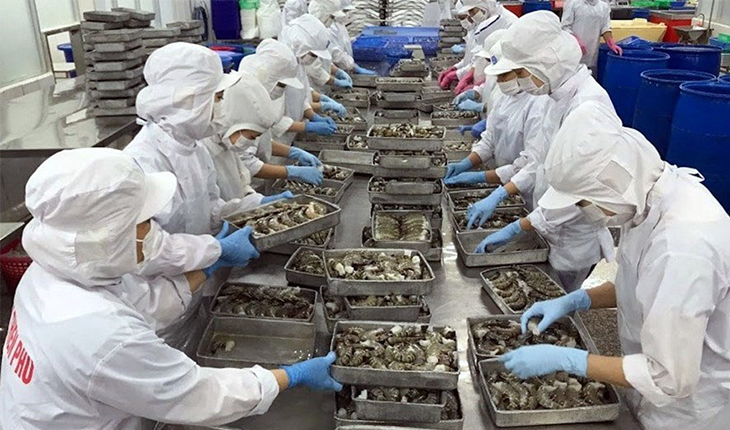According to VASEP, cumulative seafood exports in the first four months of 2024 reached $2.7 billion, a 6% increase compared to the same period last year.
With a revenue of $285 million, shrimp exports in April 2024 did not grow from the same period last year but still achieved the highest level since the beginning of the year. Cumulative revenue of the shrimp sector in the first four months of 2024 was $971 million, 6% higher than the same period in 2023.
According to businesses, shrimp exports show signs of recovery as importers are seeing a decrease in inventory, leading to a resurgence in demand. However, consumer demand has not yet clearly shown signs of recovery. The average export price of shrimp remains low compared to 2022 and 2023. Currently, the U.S. is reviewing whether to recognize Vietnam as a market economy. In case of a positive outcome, the CVD tax barrier may be removed, alleviating the burden on Vietnamese shrimp exporters.
Pangasius exports in April increased by 13%, reaching $168 million, following continuous declines in February and March. Notably, exports improved in the U.S. market, especially after Vietnamese businesses participated in the North American Seafood Expo in March and the Global Seafood Expo in Spain at the end of April. Besides the key product of frozen pangasius fillet, businesses tend to introduce more deeply processed pangasius and value-added products, attracting significant interest from importers and visitors. Cumulative exports of the first four months of the year reached $579 million, nearly up 2% compared to the same period last year.
Tuna exports in April increased by 28%, surpassing $86 million, bringing the total export value for the first four months to $301 million, a 22% increase compared to the same period last year. Compared to other sectors, tuna has shown more stable growth over the past four months (except for an 11% decrease in February due to the Lunar New Year holiday). However, according to tuna businesses, imports have increased because inventories have decreased, not because the market recovered and export prices have been better.
While squid and octopus exports declined by 14% in April, exports of mollusks increased by 14%. In the first four months, the cumulative revenue that these two sectors brought in was $182 million, down 4%, and $43 million, down 2% compared to the same period in 2023, respectively.
The tuna, squid, octopus, and other marine fish processing and export industries all face a common difficulty: a shortage of raw materials, necessary supply from imports. However, EU market regulations and new Vietnamese regulations related to IUU fishing are further complicating the raw material problem. For example, Decree 37/2024 dated April 2024, requires foreign ships to notify and declare documentation 72 hours before docking and container ships 48 hours in advance, which is impractical. Additionally, Decree 37 stipulates that imported seafood materials from exploited sources must not be mixed with domestically sourced materials in the same export batch. This new regulation, with its unclear concept of “mixing materials,” is causing confusion for businesses and is impractical for the actual production and export activities of seafood companies.
Crab exports maintained a 101% growth rate as of April, with the primary market being China and the main product being live crab. Besides live crabs, other products such as live lobsters and sea cucumbers from Vietnam still have significant room in China due to favorable geographic location and less competitive pressure compared to frozen products.
Regarding markets, among the top five largest importing countries, exports to Japan and South Korea saw a slight increase in April, while exports to the EU and the U.S. were either equivalent to or slightly decreased, and exports to China-Hong Kong dropped by over 22%. Overall, markets are still affected by inflation and inventory levels, leading to cautious imports. For example, the Chinese market has continuously declined since February, after a strong increase in January to meet Lunar New Year demand. The Chinese market has many supply sources and competitive prices, giving Chinese partners numerous options and prompting them to seek lower purchase prices.
VFM






